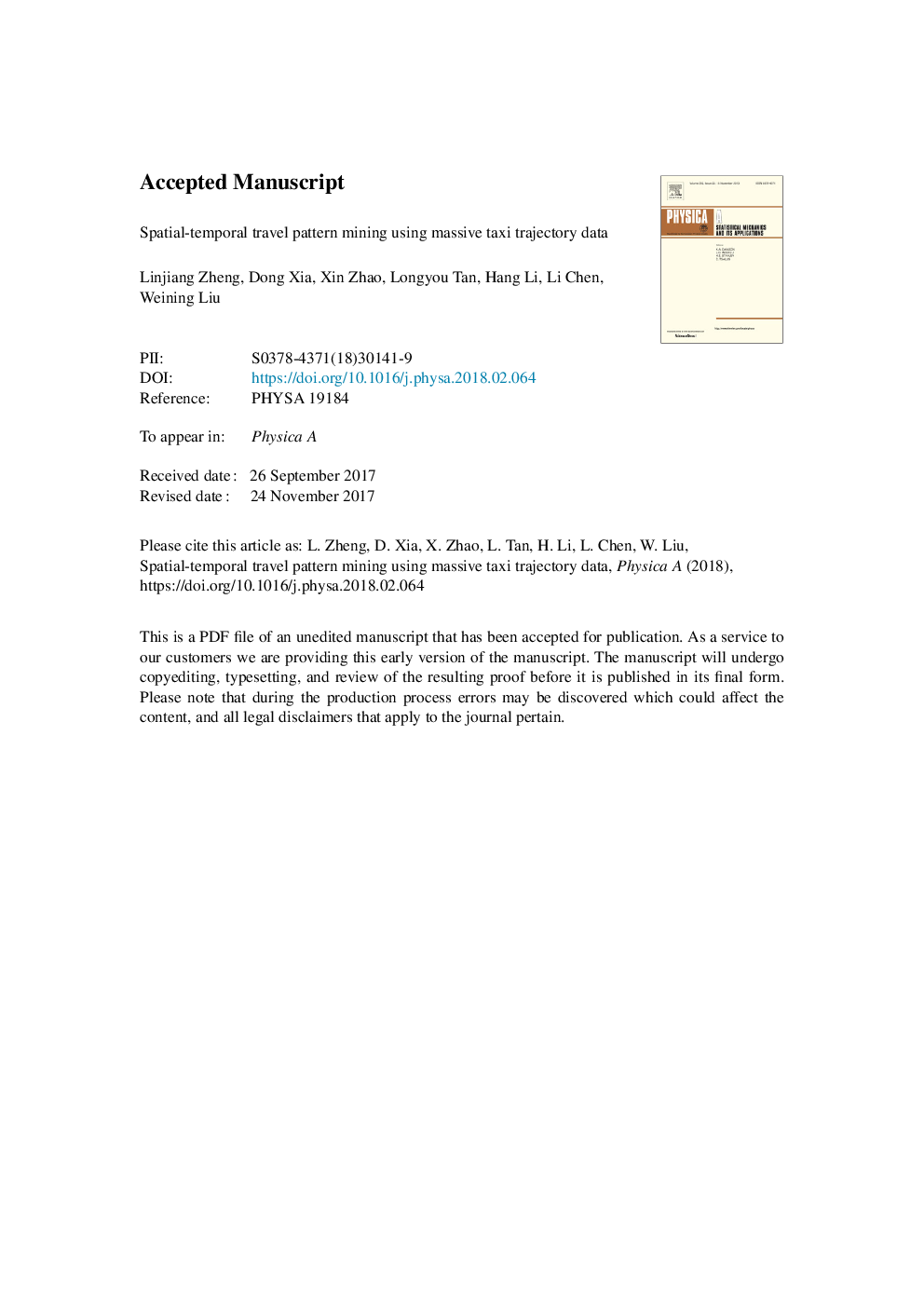| Article ID | Journal | Published Year | Pages | File Type |
|---|---|---|---|---|
| 7375531 | Physica A: Statistical Mechanics and its Applications | 2018 | 20 Pages |
Abstract
Deep understanding of residents' travel patterns would provide helpful insights into the mechanisms of many socioeconomic phenomena. With the rapid development of location-aware computing technologies, researchers have easy access to large quantities of travel data. As an important data source, taxi trajectory data are featured by their high quality, good continuity and wide distribution, making it suitable for travel pattern mining. In this paper, we use taxi trajectory data to study spatial-temporal characterization of urban residents' travel patterns from two aspects: attractive areas and hot paths. Firstly, a framework of trajectory preprocessing, including data cleaning and extracting the taxi passenger pick-up/drop-off points, is presented to reduce the noise and redundancy in raw trajectory data. Then, a grid density based clustering algorithm is proposed to discover travel attractive areas in different periods of a day. On this basis, we put forward a spatial-temporal trajectory clustering method to discover hot paths among travel attractive areas. Compared with previous algorithms, which only consider the spatial constraint between trajectories, temporal constraint is also considered in our method. Through the experiments, we discuss how to determine the optimal parameters of the two clustering algorithms and verify the effectiveness of the algorithms using real data. Furthermore, we analyze spatial-temporal characterization of Chongqing residents' travel pattern.
Related Topics
Physical Sciences and Engineering
Mathematics
Mathematical Physics
Authors
Linjiang Zheng, Dong Xia, Xin Zhao, Longyou Tan, Hang Li, Li Chen, Weining Liu,
